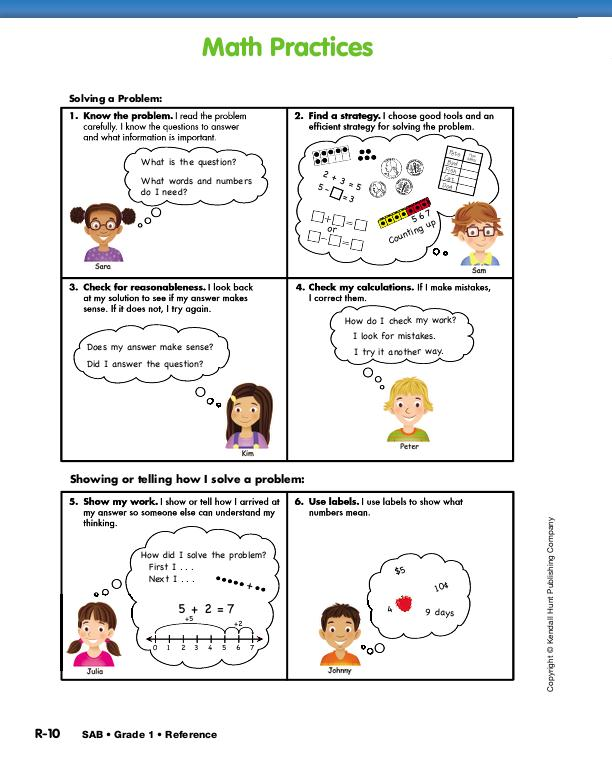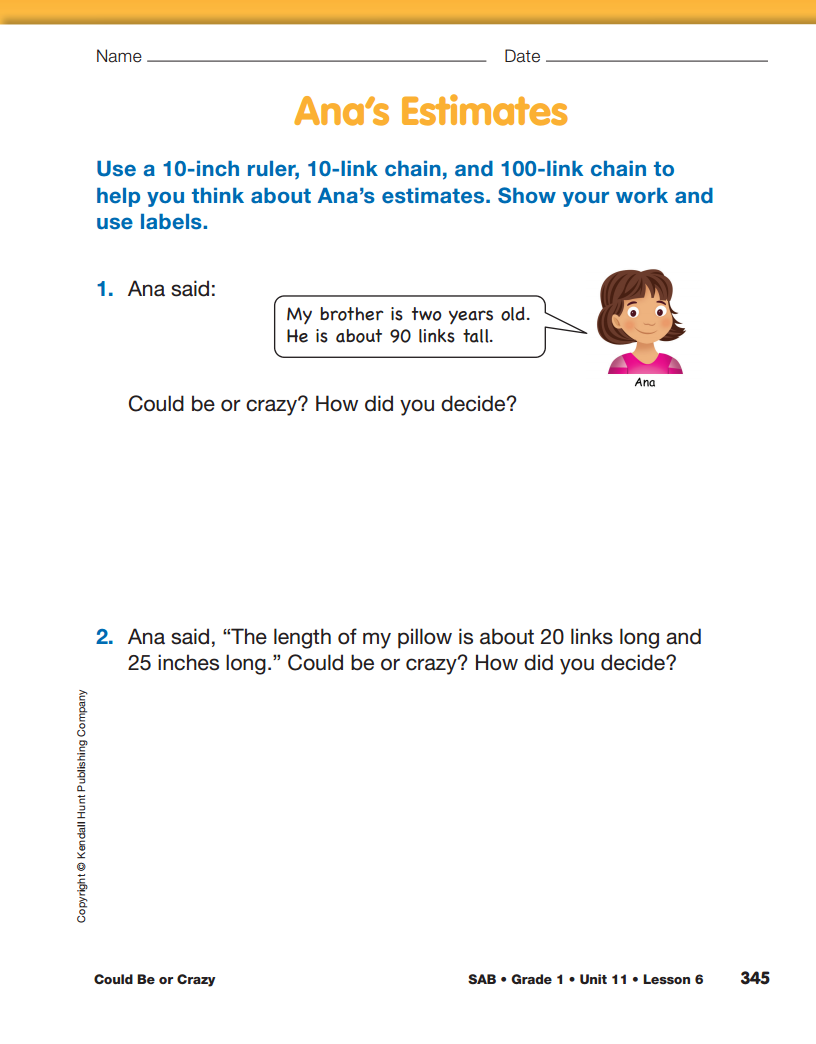After students have finished measuring, ask:
- Which is shorter: a link or an inch? (An inch is shorter than a link.)
- How did you decide if your inches measurement
would be more than or less than your links measurement?
(Possible response: I knew that it would take
more inches than links to measure the length
because inches are shorter.)
- Were you correct? Explain.
Choose a new classroom item to measure, or select one
that is listed on the chart.
- Estimate the length of this item in links.
Select several estimates and record them on the board
in order from least to greatest. Ask a student to measure
the item using a 10-link chain. Write the actual
measurement on the board, in its correct interval.
Clearly mark it as the actual measurement and include
the unit, links.
Ask students to evaluate the estimates:
- The [shelf] is [39] links long. Which is the best estimate in links? Why do you think so?
- Will you need more links or more inches to measure
the [shelf]? Why? (There will be more inches in the
measurement because they are smaller than links.)
Have a student measure the item using a 10-inch ruler.
Write the measurement in inches on the board.
- Does the measurement in inches for the [shelf] seem
reasonable? Why or why not? (Possible response:
Yes. I looked at the measurement in links. It is a little
bit less than the inches one, so the measurement
in inches seems reasonable.)
Tell students you are going to say measurements that
"could be" or are "crazy" and they will need to determine
which it is. Remind them that could be measurements
are reasonable and crazy measurements are
impossible. Encourage them to use the 100-link chain
and their 10-link chains and 10-inch rulers as references.
- I measured the height of my chair. It was 35 links tall.
Could be or crazy? How did you decide? (Could be;
Possible response: I looked at my chair and my
10-link chain. I think my chair is about 25 links tall.
Your chair is taller so 35 links could be.)
- I used inches to measure the height of my chair. It
was 12 inches tall. Could be or crazy? Why? (Crazy;
Possible response: My ruler is 10 inches and that is
close to 12 inches. Your chair is much taller than
my ruler and much taller than 12 inches. Also,
inches are smaller than links. If your chair is
35 links tall, it should be more than 35 inches tall.)
- I measured a kindergarten student. She was
40 inches tall. Could be or crazy? How did you
decide? (Could be; Possible response: Our first-grade classmate was [50] inches. A kindergartener
could be shorter.)
- I measured the same kindergarten student with links
and she was 50 links tall. Could be or crazy? Why?
(Crazy; If she is 40 inches tall, she should be less
than 40 links tall. Plus, when I look at the 100-link
chain, 50 links is too tall for a kindergartener.)
- I am 53 links tall and 70 inches tall. Could be or
crazy? How did you decide? (Could be; Possible
response: If you are 53 links tall, then you should
be more than 53 inches tall because inches are
shorter than links.)
Assign the Ana's Estimates page in the Student Activity
Book to individual students. Display the Math
Practices page in the Student Activity Book. Read the
prompt aloud to the students and then ask them to
explain their answer with words or a drawing [MPE5].
They may use the 100-link chain, the 10-link chains,
and 10-inch rulers as referents. Remind students to use
proper labels [MPE6].
Use the Ana's Estimates page in the Student Activity Book to
assess students' abilities to recognize that the measure of a
length is dependent on the size of the unit of measure [E9];
estimate lengths using non-standard and standard units
(e.g., links, inches) [E11]; show their work [MPE5]; and use
labels [MPE6].















